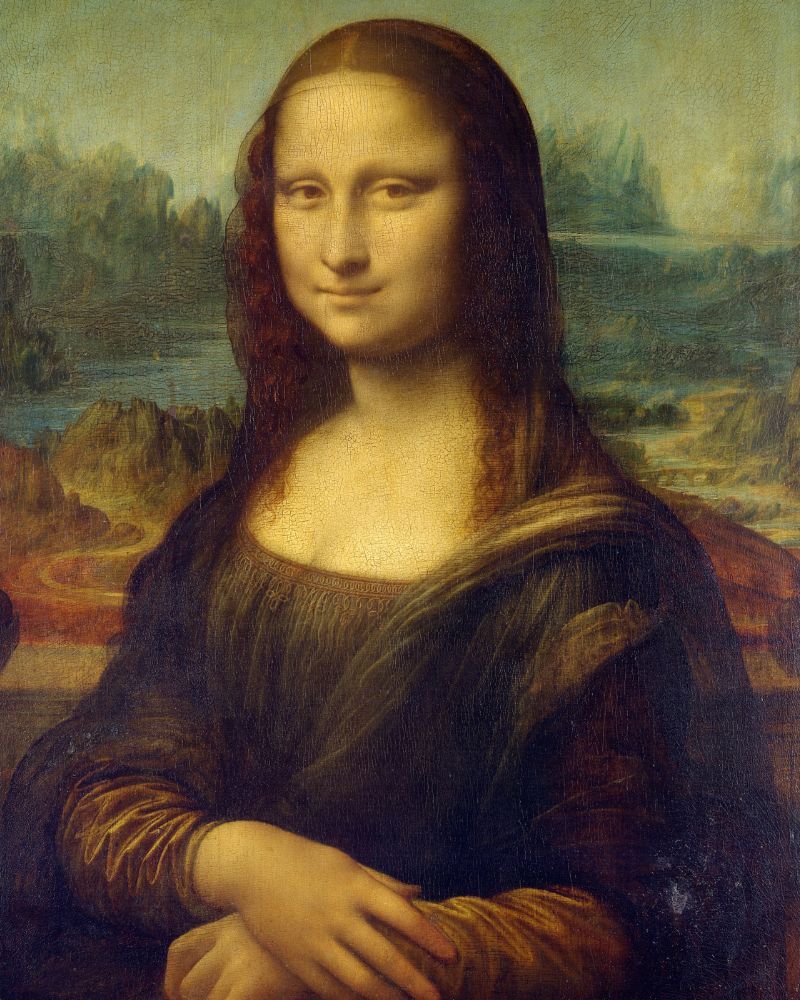The Enigmatic Beauty of the Mona Lisa: A Timeless Masterpiece

Among the countless treasures of the art world, Leonardo da Vinci’s Mona Lisa stands as a symbol of mystery, beauty, and artistic brilliance. Housed in the Louvre Museum in Paris, this painting has captivated viewers for over 500 years, not only for its impeccable technique but also for the enigmatic expression of its subject. Its allure continues to transcend time and culture, making it one of the most famous, studied, and admired artworks in the world.
The Creation of a Legend
Painted between 1503 and 1506, with some scholars suggesting that Leonardo continued to refine the painting until 1517, the Mona Lisa is widely regarded as one of da Vinci's finest works. It depicts a woman with an expression that has intrigued art lovers, historians, and philosophers for centuries. The woman’s identity, her serene smile, and the atmosphere created through da Vinci's use of light and shadow, all contribute to the timeless beauty of this portrait.
The painting’s delicate nature is achieved through sfumato, a technique that da Vinci mastered, which involves the gentle blending of colors and tones to create soft transitions and a natural look. This method gives the Mona Lisa’s face a lifelike quality, enhancing the depth and realism of the subject's features. The subtle gradation of light on her skin and the delicate play of shadow around her eyes and lips continue to be celebrated as an extraordinary display of Leonardo’s technical genius.
The Mystery of the Smile
One of the most discussed aspects of the Mona Lisa is the subject's smile. At first glance, it appears to be faint, almost ambiguous, but upon further observation, it seems to change as the viewer shifts their perspective. Some claim the smile expresses happiness, while others see it as a sign of melancholy. The expression has inspired countless interpretations, with theories suggesting that the smile may reflect the inner complexities of the woman’s emotions.
Psychologists, art critics, and even ordinary viewers have been fascinated by how the smile appears to shift depending on where the viewer stands, making it one of the most unique and captivating features of the painting. This elusive quality contributes to the Mona Lisa’s enduring charm and mystique, turning her into a symbol of beauty, complexity, and the human condition.
The Identity of the Subject
For centuries, the true identity of the woman in the Mona Lisa has been a subject of speculation. Some believe she is Lisa Gherardini, a Florentine woman who was married to a wealthy merchant named Francesco del Giocondo, from whom the painting gets its alternate name: La Gioconda. However, other theories suggest the possibility of the figure being a composite of da Vinci’s imagination or even a self-portrait of the artist in disguise.
While the exact identity may never be known with certainty, what is undeniable is the universal appeal and timeless grace that the figure exudes. The Mona Lisa embodies an ideal of femininity and mystery that transcends her identity, allowing each viewer to project their emotions and interpretations onto her.
The Landscape and Composition
The background of the Mona Lisa further amplifies the painting’s sense of depth and realism. Behind the woman is a serene, somewhat surreal landscape, where winding paths, distant mountains, and flowing rivers stretch out into the horizon. The composition is designed to evoke a sense of harmony between the subject and nature. The vastness of the landscape contrasts with the intimacy of the subject's presence, enhancing the feeling of tranquility that surrounds the painting.
Leonardo’s genius as a scientist and observer of nature is evident in his depiction of the landscape. The atmospheric perspective he employed, where the colors and shapes of distant elements are softened and blurred, brings an element of three-dimensionality to the painting. The landscape, though seemingly distant, seems as real and tangible as the figure of the woman herself, reinforcing the unity of life and nature.
The Legacy and Influence of the Mona Lisa
The Mona Lisa has become an iconic representation of Renaissance art, and its influence has permeated every corner of the art world. From the moment it was completed, it captured the attention of artists, scholars, and collectors, inspiring countless imitations, parodies, and reinterpretations. It has been the subject of poetry, literature, films, and modern pop culture, cementing its place in the collective imagination.
Throughout its history, the Mona Lisa has also faced its share of controversy. It was stolen from the Louvre in 1911, leading to a worldwide search that only ended in 1913. The event added to the legend of the painting, as the theft only heightened its fame.
Its fame reached new heights with the advent of photography and mass media, making it one of the most recognizable images in the world. It is the face that graces postcards, T-shirts, and advertisements, becoming a symbol not just of art but of cultural significance. Visitors from across the globe flock to the Louvre Museum each year to catch a glimpse of the Mona Lisa, standing in awe before her ever-changing smile.
The Mona Lisa is more than just a painting—it is an icon of artistic achievement and a symbol of the mysteries of the human spirit. Leonardo da Vinci’s technical mastery, the psychological depth of the subject, and the timeless appeal of the painting have kept it relevant and beloved through centuries. Each viewer brings their interpretation, seeing different things in the smile, the eyes, or the landscape. As such, the Mona Lisa remains an everlasting masterpiece, a work of art that will continue to captivate, challenge, and inspire generations to come.
In a world that constantly changes, the Mona Lisa remains a constant—a reminder of the power of art to capture the eternal, the beautiful, and the enigmatic.